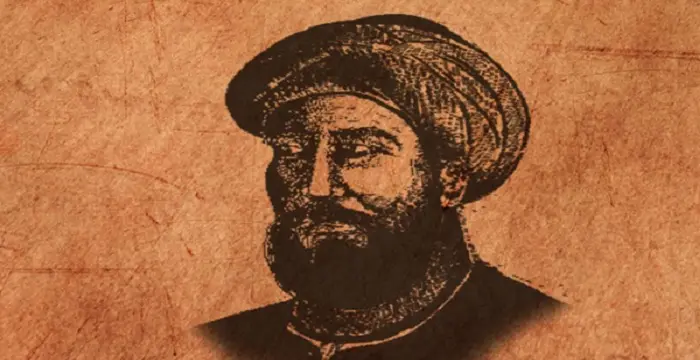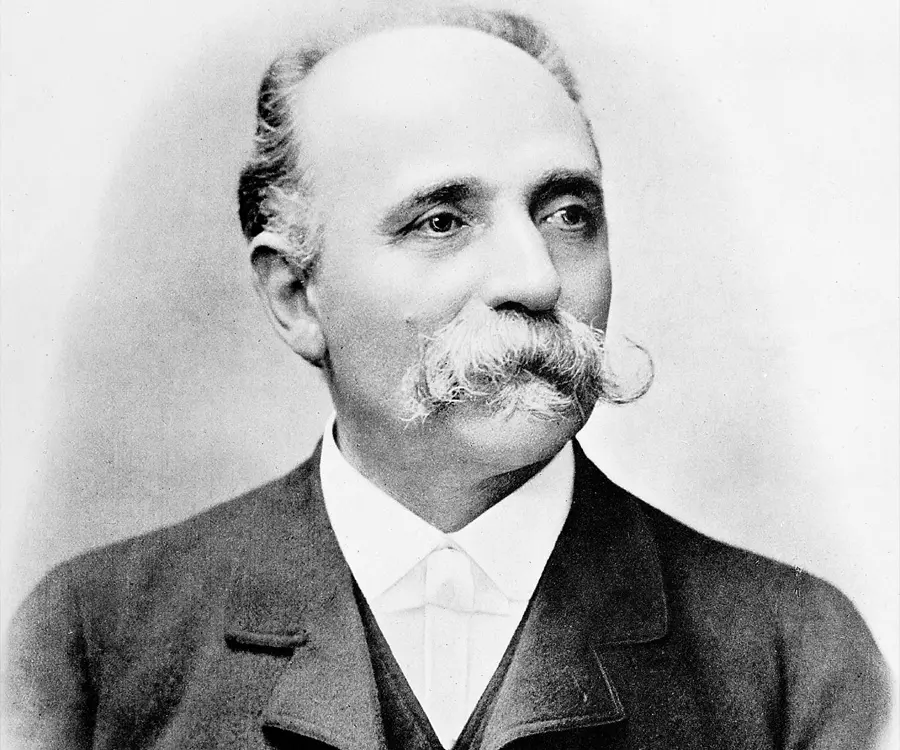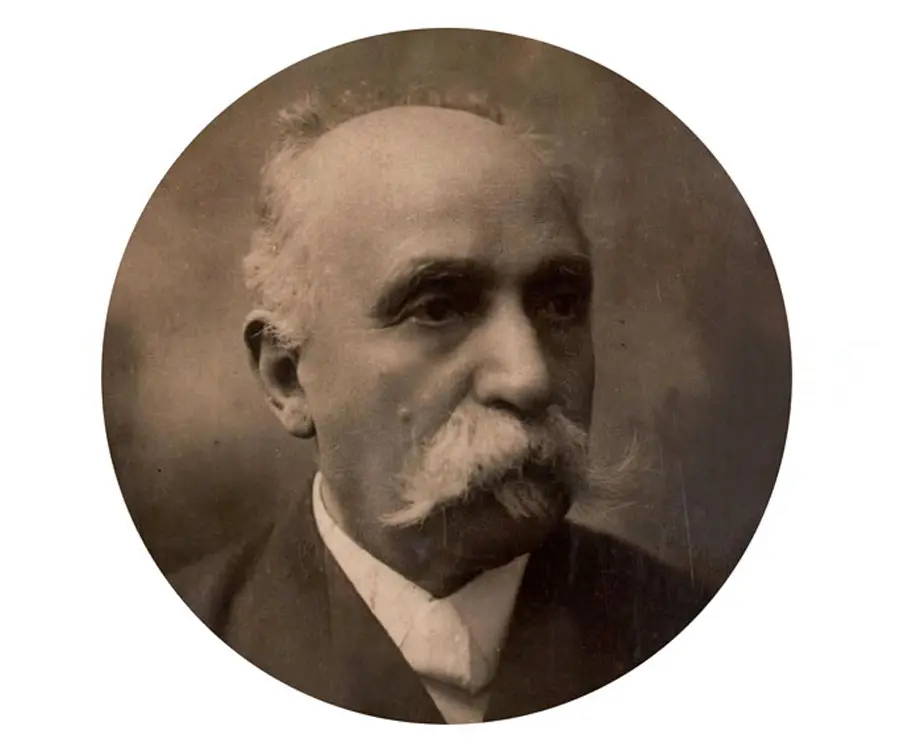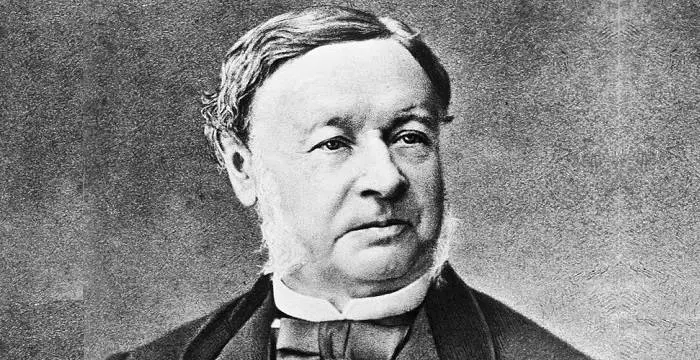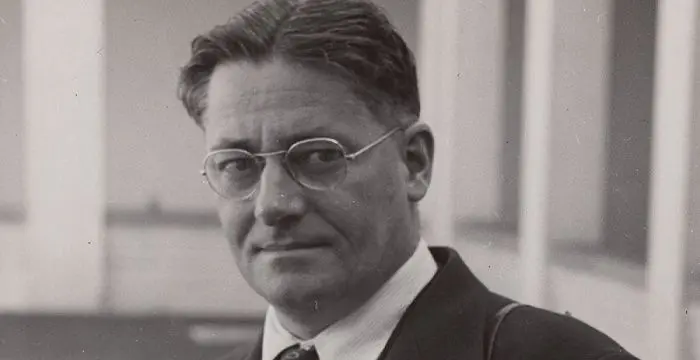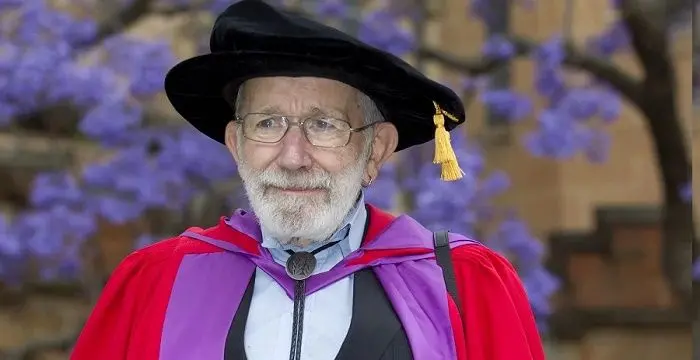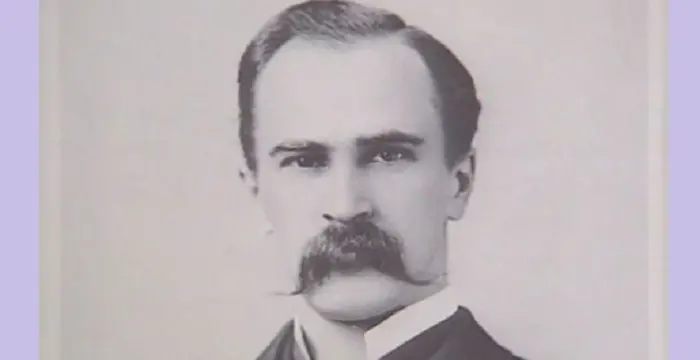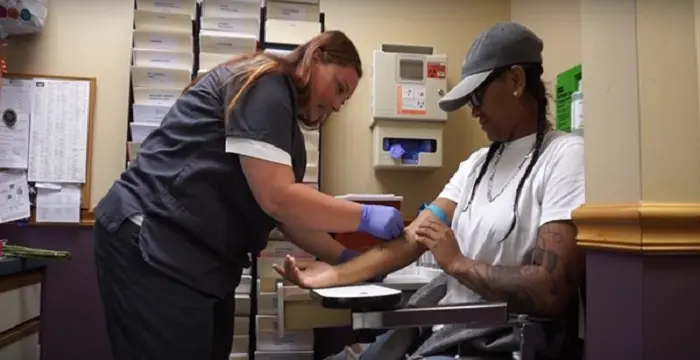
Camillo Golgi - Physicians, Birthday and Childhood
Camillo Golgi's Personal Details
Camillo Golgi was an Italian physician, biologist and pathologist who won the Nobel Prize for Physiology or Medicine in 1906.
| Information | Detail |
|---|---|
| Birthday | July 7, 1843 |
| Died on | January 21, 1926 |
| Nationality | Italian |
| Famous | Physicians, Biologists, Pathologists |
| Spouses | Lina Aletti |
| Known as | Dr. Camillo Golgi |
| Universities |
|
| Birth Place | Corteno, Kingdom of Lombardy–Venetia, Italy |
| Gender | Male |
| Sun Sign | Cancer |
| Born in | Corteno, Kingdom of Lombardy–Venetia, Italy |
| Famous as | Physician, Pathologist, Biologist |
| Died at Age | 82 |
// Famous Physicians
Al-Zahrawi
Al-Zahrawi, was an illustrious medieval Arab Muslim physician and surgeon. Check out this biography to know about his childhood, family life, achievements and interesting facts about him.
Jabir Ibn Hayyan
Jabir Ibn Hayyan was a medieval era polymath. Check out this biography to know about his life, works and achievements.
Maria Montessori
Maria Montessori was a physician and educator who developed the approach of Montessori education. This biography of Maria Montessori provides detailed information about her childhood, life, achievements, works & timeline.
Camillo Golgi's photo
Who is Camillo Golgi?
Camillo Golgi was an Italian physician, biologist and pathologist who won the Nobel Prize for Physiology or Medicine in 1906 along with the Spanish histologist Santiago Ramón y Cajal. Several anatomical and physiological phenomena are named after this man who is considered to be the greatest neuroscientist of the nineteenth century. Golgi—with the aid of basic facilities—developed the silver nitrate method of studying nerve tissues. This helped in the discovery of a nerve cell that has many dendrites or nerve extensions. This is now called ‘Golgi cell’, after the name of its discoverer, Camillo Golgi. This discovery supported the experiments of German anatomist Wilhelm von Waldeyer-Hartz and Ramón y Cajal who went on to establish the nerve cells as the rudimentary structural unit of the entire nervous system. This turned out to be a crucial point in the advancement of modern neuroscience. Later, his experiments led to the discovery of the ‘Golgi tendon spindle’ or ‘Golgi tendon organ’ and the ‘Golgi complex’ or ‘Golgi apparatus’. Camillo Golgi also studied the causes of malaria and found out that the tertian and quartan malarial fevers happen due to the presence of a protozoan parasite named ‘Plasmodium’. He was a famous teacher and the door of his laboratory was open for every young researchers.
// Famous Biologists
Juliane Koepcke
Juliane Koepcke is a German-Peruvian biologist, who was the lone survivor among the 92 passengers and crew of the ill-fated LANSA Flight 508 that crashed in the Peruvian rainforest on 24 December 1971. Know more about her life in this biography.
Theodor Schwann
Theodor Schwann was a German physiologist who discovered the Schwann cells in the peripheral nervous system. This biography of Theodor Schwann provides detailed information about his childhood, life, achievements, works & timeline.
Norman Borlaug
Norman Borlaug was an American biologist known as the “Father of the Green Revolution”. This biography of Norman Borlaug provides detailed information about his childhood, life, achievements, works & timeline.
Childhood & Early Life
Camillo Golgi was born on 7 July 1843 in the village of Corteno, in the province of Brescia (Lombardy) in northern Italy. The village is now called Corteno Golgi after his name. His father was a doctor and district medical officer in Brescia.
He studied medicine at the University of Pavia. He was an intern at the Institute of Psychiatry directed by Cesare Lombroso.
While working in the laboratory of experimental pathology under Giulio Bizzozero, a professor of histology and pathology, Golgi got interested in experimental research and histological techniques.
In 1865, he graduated from the University of Pavia. He was a student when the fight for independence was going on in Italy.
Career
After graduating, he continued to research in Pavia at the Hospital of St. Matteo. During this time, his research was mostly concentrated on the nervous system.
In 1872, he had to stop his academic research and joined the Hospital of Chronically Ill (Pio Luogo degli lncurabili) in Abbiategrasso as a chief medical officer. In a small kitchen cum laboratory, Golgi started his experiments of staining nervous tissue using mainly silver.
In 1873, he published a short note describing his observation of the elements of the nervous tissue. The note was named 'On the structure of the brain grey matter' and was published in the ‘Gazzetta Medica Italiana’.
In 1875, Golgi published the first drawings of neural structures as revealed by the ‘Golgi stain’ in an article on the olfactory bulbs.
In 1878 Golgi discovered the tendinous sensory corpuscles that are later named Golgi tendon organs.
In 1885, an illustrated monograph on the precise anatomy of the central nervous organs came out. In the same year, he returned to Pavia. He joined his alma mater in 1876 as Professor of Histology.
In 1881, he was appointed to the chair of General Pathology at the University of Pavia.
From 1886 to 1892, Golgi provided important contributions to the study of by elaborating the life-cycle of Plasmodium and the chronological coincidence between the repeated fever and the discharge of the parasite in the red cells.
In 1897, Golgi discovered the intracellular structure in neutrons, which was named after him as Golgi apparatus.
In 1900, Camillo Golgi was named senator by King Umberto I.
In 1913, he became foreign member of the Royal Netherlands Academy of Arts and Sciences.
He retired in 1918 but held the position of professor emeritus at the University of Pavia.
Major Works
Camillo Golgi’s most important work was the discovery of ‘black reaction’ or ‘reazione nera’ (later known as ‘Golgi’s stain’) which is a method of staining nervous cells with the use of silver nitrate. The subsequent reaction allowed him to see the paths of nerve cells in the brain for the first time. In addition, his discovery of Golgi apparatus was a real advancement in cell biology and makes him the most frequently cited scientist in cytology. Its existence confirmed in the mid-1950s by the use of the electron microscope. The Golgi apparatus plays an important role in the intracellular sorting, trafficking and targeting of proteins.
Awards & Achievements
In 1906, Golgi jointly won the Nobel Prize for Physiology with Santiago Ramón y Cajal for their studies on the structure of the nervous system.
Personal Life & Legacy
In 1877, he married Lina Aletti, the niece of Giulio Bizzozero. The couple had no children, and adopted Golgi's niece Carolina (now Mrs. Carolina Golgi-Papini).
His publications are anthologised in Opera Omnia that appeared in four volumes (first three in 1903, fourth volume in 1929).
Camillo Golgi died in Pavia, Italy, on 21 January 1926 and was buried in the Monumental Cemetery of Pavia (viale San Giovannino).
A marble statue has been erected in his honour, in a yard of the old buildings of the University of Pavia.
The Historical Museum at the University of Pavia devoted a hall to Golgi where one can find his certificates of honorary degrees, diplomas and awards.
Trivia
Adelchi Negri discovered the Negri bodies and Emilio Veratti put forward the idea of sarcoplasmic reticulum in skeletal muscle fibers for the first time in Golgi’s laboratory.
// Famous Pathologists
Howard Florey
Howard Florey was an eminent Australian pathologist who is credited for making penicillin available to the world. With this biography, explore about his childhood, life, achievements and timeline.
Robin Warren
Robin Warren is an Australian pathologist who was conferred the prestigious Nobel Prize for the discovery of bacterium Helicobacter pylori. With this biography, explore in details about his life.
William Osler
William Osler was a Canadian Physicist and founding father of Medicine and Medical Service at Johns Hopkins Hospital in USA. Read this biography to know more about his life.
Camillo Golgi's awards
| Year | Name | Award |
|---|---|---|
Other | ||
| 0 | Nobel Prize in Physiology or Medicine (1906) | |
Camillo Golgi biography timelines
- // 7th Jul 1843Camillo Golgi was born on 7 July 1843 in the village of Corteno, in the province of Brescia (Lombardy) in northern Italy. The village is now called Corteno Golgi after his name. His father was a doctor and district medical officer in Brescia.
- // 1865In 1865, he graduated from the University of Pavia. He was a student when the fight for independence was going on in Italy.
- // 1872In 1872, he had to stop his academic research and joined the Hospital of Chronically Ill (Pio Luogo degli lncurabili) in Abbiategrasso as a chief medical officer. In a small kitchen cum laboratory, Golgi started his experiments of staining nervous tissue using mainly silver.
- // 1873In 1873, he published a short note describing his observation of the elements of the nervous tissue. The note was named 'On the structure of the brain grey matter' and was published in the ‘Gazzetta Medica Italiana’.
- // 1875In 1875, Golgi published the first drawings of neural structures as revealed by the ‘Golgi stain’ in an article on the olfactory bulbs.
- // 1876 To 1885In 1885, an illustrated monograph on the precise anatomy of the central nervous organs came out. In the same year, he returned to Pavia. He joined his alma mater in 1876 as Professor of Histology.
- // 1877In 1877, he married Lina Aletti, the niece of Giulio Bizzozero. The couple had no children, and adopted Golgi's niece Carolina (now Mrs. Carolina Golgi-Papini).
- // 1878In 1878 Golgi discovered the tendinous sensory corpuscles that are later named Golgi tendon organs.
- // 1881In 1881, he was appointed to the chair of General Pathology at the University of Pavia.
- // 1886 To 1892From 1886 to 1892, Golgi provided important contributions to the study of by elaborating the life-cycle of Plasmodium and the chronological coincidence between the repeated fever and the discharge of the parasite in the red cells.
- // 1897In 1897, Golgi discovered the intracellular structure in neutrons, which was named after him as Golgi apparatus.
- // 1900In 1900, Camillo Golgi was named senator by King Umberto I.
- // 1903 To 1929His publications are anthologised in Opera Omnia that appeared in four volumes (first three in 1903, fourth volume in 1929).
- // 1906In 1906, Golgi jointly won the Nobel Prize for Physiology with Santiago Ramón y Cajal for their studies on the structure of the nervous system.
- // 1913In 1913, he became foreign member of the Royal Netherlands Academy of Arts and Sciences.
- // 1918He retired in 1918 but held the position of professor emeritus at the University of Pavia.
- // 21st Jan 1926Camillo Golgi died in Pavia, Italy, on 21 January 1926 and was buried in the Monumental Cemetery of Pavia (viale San Giovannino).
// Famous Cancer Celebrities peoples
Jacob Elordi
Jacob Elordi is an Australian actor. Let’s take a look at his childhood, family, personal life, career, etc.
Riele Downs
Riele Downs is a Canadian-American actress & Musical.ly star. Let’s take a look at her family and personal life including age, birthday, net worth, boyfriends and fun facts.
Yammy Xox
Check out all that you wanted to know about Yammy Xox, the famous British YouTube Personality; her birthday, her family and personal life, her boyfriends, fun trivia facts and more.
Kaylee Quinn
Kaylee Quinn is an American dancer, model, and actress. Let’s have a look at her family and personal life including age, date of birth, net worth, relationships, and fun facts.
Sophia Montero
Sophia Montero is an American singer and YouTuber. Let’s have a look at her family and personal life including age, date of birth, net worth, relationships, and fun facts.
Domo Wilson
Check out all that you wanted to know about Domo Wilson, the famous American Vlogger & YouTube Personality; her birthday, her family and personal life, fun trivia facts and more.
Camillo Golgi's FAQ
What is Camillo Golgi birthday?
Camillo Golgi was born at 1843-07-07
When was Camillo Golgi died?
Camillo Golgi was died at 1926-01-21
Where was Camillo Golgi died?
Camillo Golgi was died in Pavia, Italy
Which age was Camillo Golgi died?
Camillo Golgi was died at age 82
Where is Camillo Golgi's birth place?
Camillo Golgi was born in Corteno, Kingdom of Lombardy–Venetia, Italy
What is Camillo Golgi nationalities?
Camillo Golgi's nationalities is Italian
Who is Camillo Golgi spouses?
Camillo Golgi's spouses is Lina Aletti
What was Camillo Golgi universities?
Camillo Golgi studied at 1865 - University of Pavia
What is Camillo Golgi's sun sign?
Camillo Golgi is Cancer
How famous is Camillo Golgi?
Camillo Golgi is famouse as Physician, Pathologist, Biologist
